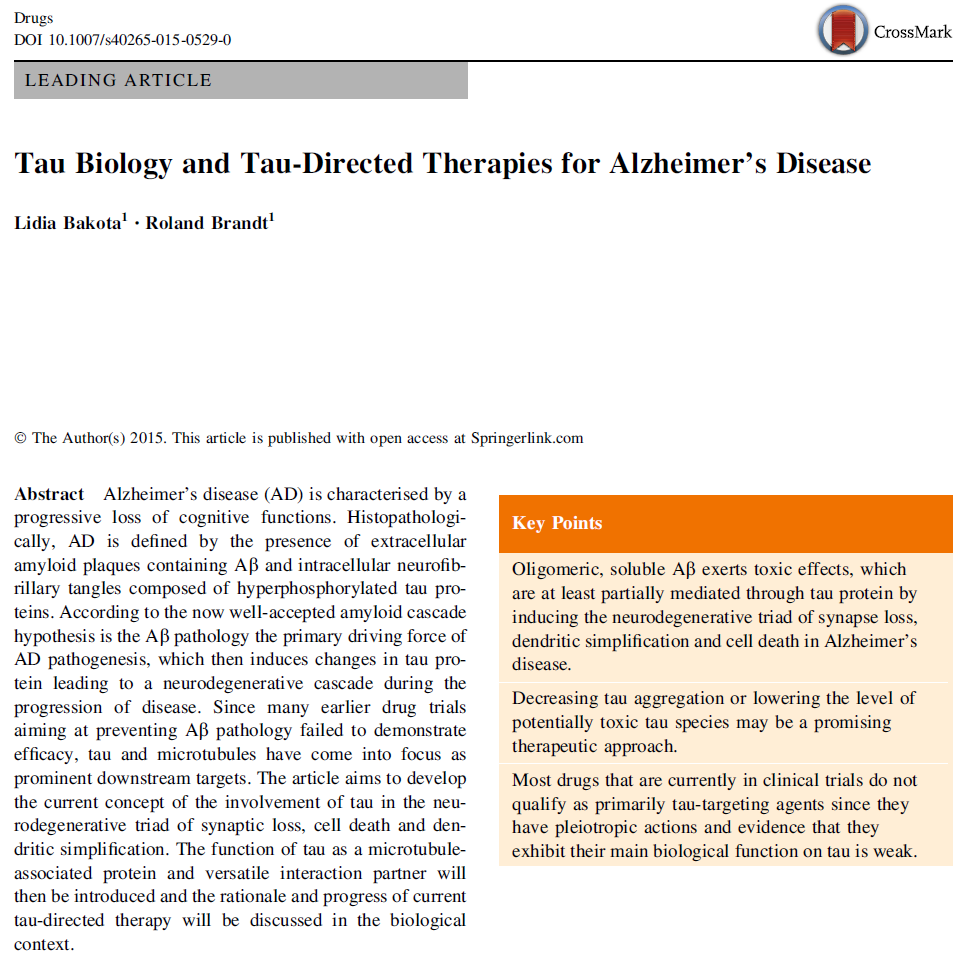Science News
Tau Biology and Tau-Directed Therapies for Alzheimer’s Disease
Mag 05, 2020 | News

Abstract Alzheimer’s disease (AD) is characterised by a progressive loss of cognitive functions. Histopathologically, AD is defined by the presence of extracellular amyloid plaques containing Ab and intracellular neurofibrillary tangles composed of hyperphosphorylated tau proteins. According to the now well-accepted amyloid cascade hypothesis is the Ab pathology the primary driving force of AD pathogenesis, which then induces changes in tau protein leading to a neurodegenerative cascade during the progression of disease. Since many earlier drug trials aiming at preventing Ab pathology failed to demonstrate efficacy, tau and microtubules have come into focus as prominent downstream targets. The article aims to develop the current concept of the involvement of tau in the neurodegenerative triad of synaptic loss, cell death and dendritic simplification. The function of tau as a microtubule associated protein and versatile interaction partner will then be introduced and the rationale and progress of current tau-directed therapy will be discussed in the biological context.
https://www.ncbi.nlm.nih.gov/pmc/articles/PMC4757605/pdf/40265_2015_Article_529.pdf
Written by tubinAD
